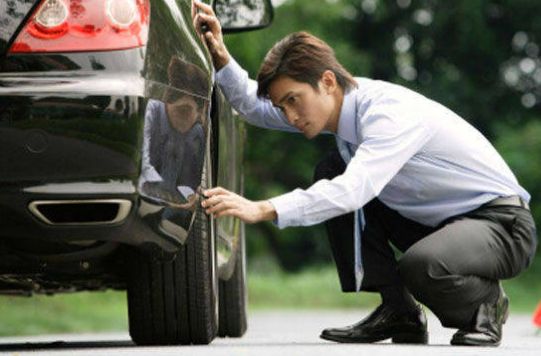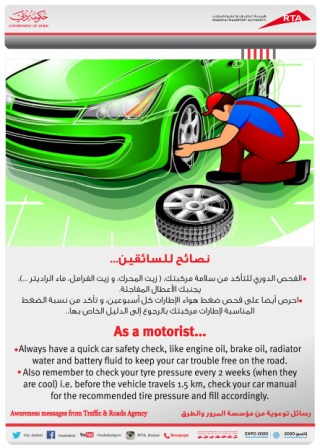
When your vehicle breaks down, it can turn into a real nightmare, but performing a Pre Drive Vehicle Check potentially helps motorists to avoid a breakdown disaster – nobody wants to get stranded on one of our highways or en-route to an important meeting!
Motorists can determine how road-ready their vehicle is with a quick visual vehicle check. If your check discovers that service or repairs are needed, they can be performed in advance to ensure your safety and convenience on the road, and they even might save you money if issues spotted early!
In-depth checks should be done regularly be experts, but in addition, every motorist should perform regular visual pre-drive checks!
How to do it right:
- Check the tires including tire pressure and tread. Under-inflated tires reduce a vehicle’s fuel economy. Uneven wear indicates a need for wheel alignment. Tires should also be checked regularly for bulges and bald spots.
- Check the hoses and belts as they can become cracked, brittle, frayed, loose or show signs of excessive wear. These are critical to the proper functioning of the electrical system, air conditioning, power steering and the cooling system.
- Check filters and fluids including engine oil, power steering , brake, and transmission, as well as windshield washer solvent, radiator coolant and AC gas/coolant.
- Check for spots under your car (condensation water dropping from your A/C is normal).
- Check for abnormal smells.
- Check lighting so that you can see and be seen. Check that all interior and exterior lighting is working properly, including your indicators. This is of key importance for motorbikes!
- Check the wipers (worn wiper blades are dangerous when you drive in bad weather conditions).
- Check the brakes and battery to be sure the battery connection is clean, tight and corrosion-free and that the brakes are functioning properly.
- Check that all windows and your rear-view mirrors are clean enough and not obstructed so you can see out properly
- Check all the seat belts in your vehicle and that the seat head rests are anchored properly from time to time.
- Check the safety devices of your kids (baby seat, booster seat, etc.) regularly.
- Check your emergency kit (fire extinguisher, first-aid kit, warning triangle, etc.)
Please refer to our related topics:
- http://www.roadsafetyuae.com/maintenance-general/
- http://www.roadsafetyuae.com/maintenance-tires/
- http://www.roadsafetyuae.com/original-spare-parts/









